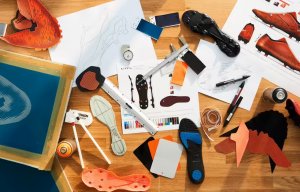
Decathlon invests in fibre recycling startup
3D rendering and virtual sampling saving significant time and costs.

14th April 2023
Innovation in Textiles
|
Villeneuve d’Ascq, France
Decathlon – the world’s largest sporting goods retailer with over 2,080 stores in 56 countries – has been able to shorten lead times and reduce its sampling costs by implementing Shima Seiki’s APEXFiz design software.
Founded in 1976 in Villeneuve d’Ascq in northern France where it is still headquartered, Decathlon – which employs over 100,000 people – manages all of its research, design, production, logistics and distribution in-house.
Jerome Ramus, Decathlon’s 3D leader for socks, explained how the Shima Seiki software has helped to streamline product planning and development processes.
“Before purchasing APEXFiz, we had to develop our socks using 2D drawings,” he said. “This sometimes led to misunderstandings about our design intentions, requiring several back-and-forths between the supplier and our concept team. After the evaluation and benchmark testing of several different software packages and discussions with our suppliers, we selected APEXFiz.
“It allows us to create 3D visuals of socks with high quality and it also enables us to export a wide variety of files. We like the user interface, and it has not only reduced our lead times, but has also reduced sampling errors because the 3D rendering accurately portrays the designer’s intentions. We can now use APEXFiz alone to do everything from initial idea design to sampling for a wide variety of socks.”
With APEXFiz, a 3D rendering is created based on the original design. It can then be converted to stitch count, so the design can be adjusted while taking the aspect ratio of the actual knitted fabric into consideration. Accurate evaluation of pattern size and placement is therefore possible on the 3D sock avatar and simulations are also produced using digitized versions of actual yarn, so they are extremely realistic. Colourways can also be reproduced accurately using actual yarn colours.
“The use of virtual samples allows us to quickly make design changes without the cost and time required to create actual samples,” Ramus explained. “In addition, 3D rendered data contains information on yarn, knit structure and size. The factory receives this tech pack and is able to create more accurate samples without errors, resulting in actual samples that are exactly as the designers intended on the first try.”
Before adopting APEXFiz, a lot of time was spent at the factory converting 2D CAD data into programming code compatible with knitting machines. With APEXFiz, however, programming time has been reduced because bitmaps of basic programming code which can be converted to a format compatible with knitting machines can be exported from the 3D renderings. The cost of factory programming time and yarn usage by having to re-create actual samples multiple times has been reduced with APEXFiz.
“We are saving time in development and experiencing better communication within our development process, as well as better promotion of our products,” Ramus concluded.

Business intelligence for the fibre, textiles and apparel industries: technologies, innovations, markets, investments, trade policy, sourcing, strategy...
Find out more